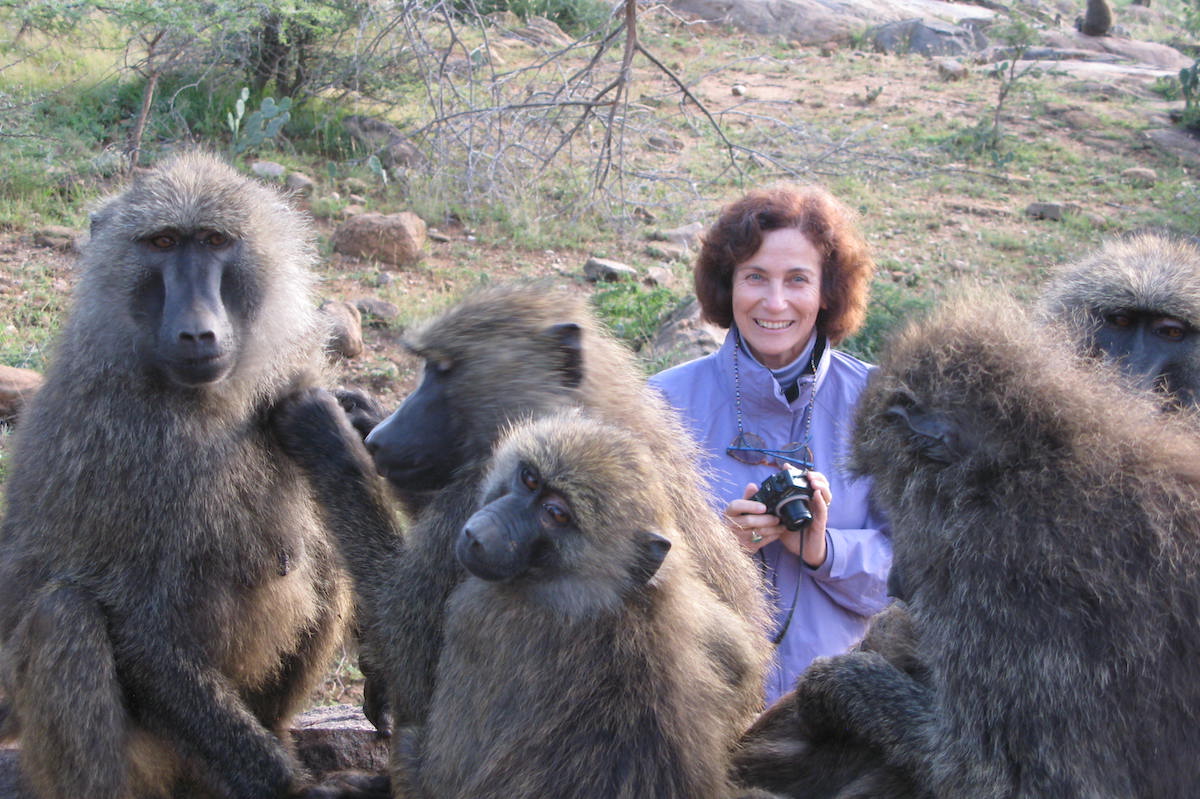Dr. Shirley Strum: Walking with Baboons in Kenya
3 min readMeet Dr. Shirley Strum, founder of Uaso Ngiro Baboon Project in Kenya, who has created baboon eco-tourism projects at Twala-Tenebo Cultural Village to employ women in Kenya.
The post Dr. Shirley Strum: Walking with Baboons in Kenya appeared first on JourneyWoman.

I wanted to test a popular model that used baboons because only a few primates, including humans and baboons, have left the safety of the forest for the open savanna. My professor said that scientists should watch how primates move and behave in their natural environment to understand fossils and to reconstruct the behaviour of earliest humans.
Q. Tell us more about baboons!
A. They are very intelligent. They are the most successful non-human primate in Africa and initially offered insights into how early humans survived five to six million years ago.
While I began in the 1970s to use baboons as models for early human evolution, what I’ve learned helps me to redefine what is unique about humans. I’ve learned that many of the skills we assign to humans are already there in baboons.
For example, baboons make friends and have ways to get what they want without aggression. They have politics, even sexual politics. What baboons don’t have are symbols, language, tools/technology –what we normally call “culture”. Since I have to assume that the earliest humans were as smart as these baboons, this position resets the starting point of human evolution.
Humans took social and cultural skills further with our bigger brain, social cooperation, more diverse social emotions like jealousy and shame and tools that became technology. Baboons are smart but humans are smarter!
Q. What has your research revealed?
A. That baboons live more socially complex lives than we give them credit for. My findings were rejected by many scientists at the time because baboons were supposedly ‘mindless’ creatures. Today we accept that animals have emotions and minds, dramatically different from 50 years ago when I began.
Q. Share some ground-breaking insights in your baboon research
A. When two males fight, the losing male might leave and then return to the winner with a very young infant, a ‘black baby’ on his belly. That turns off the aggression of the other male because the troop doesn’t defend large males but it does defend females and infants, so if the opponent continues his aggression, he will get mobbed by the troop. Not a nice experience and a lesson learned immediately. But there is a catch. The troop mobs the male at whom the baby screams so to use an infant successfully as a “buffer” the male needs to develop a friendship with the infant first so he isn’t the one the baby screams at.
An infant is born black and stands out from the olive colour of the rest of the group. We think the black colour is a super stimulus attracting the attention of many of the group. However, at this point the infant already senses who is safe and who might be in trouble based on his mother’s reaction to others. When an adult male makes friends with a black infant, he now has options that don’t involve aggression and which rely on intelligence and social skills. At seven months, the black baby turns brown/olive like the rest of the troop. It’s a social strategy of defence.
Discover more from Slow Travel News
Subscribe to get the latest posts sent to your email.



